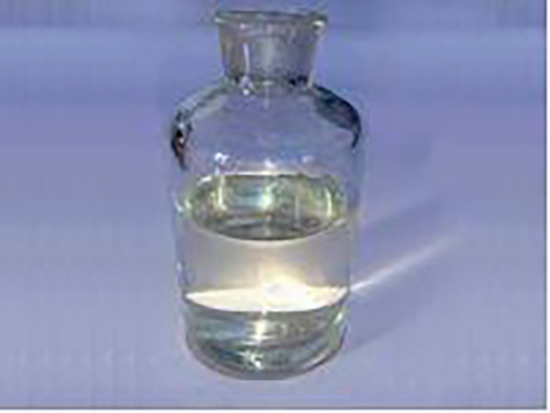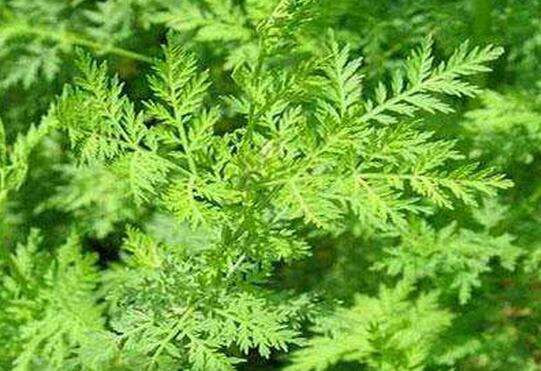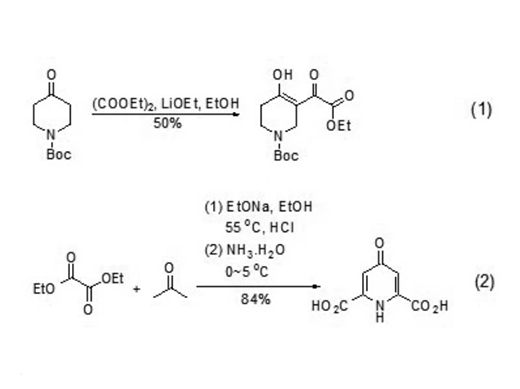The toxicology of glutaraldehyde
Apr 15,2022
Introduction
Glutaraldehyde, with the molecular formula of C5H8O2, is an organic compound[1]. It is a colorless and transparent oily liquid with pungent smell. It is commonly used as bactericide, food industrial processing assistant, disinfectant, tanning agent, wood preservative, medicine and polymer synthetic raw materials.

Picture 1 Glutaraldehyde liquid
The toxicology of glutaraldehyde
1. Skin irritation: glutaraldehyde is irritating to human and animal skin and mucous membranes. 5% glutaraldehyde can cause severe irritation symptoms, but 2% glutaraldehyde only makes the skin shiny brown.
2. Systemic toxicity: Glutaraldehyde has slight systemic toxicity to humans.
3. Acute toxicity: 2% fortified acidic glutaraldehyde in mouse vein: LD50: 26 ± 1.6mg/kg, death time: 4 days; Rat vein: LD50: 24 ± 2mg / kg, death time 0 ~ 2 days; Oral administration of mice: LD50: 298 ± 25mg / kg, death time: 6 days; Oral administration of rats: LD50: 233 ± 11mg / kg, death time 1 ~ 2 days; 2% alkaline glutaraldehyde mouse vein: LD50: 15mg / kg; Rat vein: LD50: 9.8mg/kg; Oral administration to mice: LD50: 352mg / kg; Oral administration to rats: LD50: 252mg / kg; Rats inhaled concentrated vapor of 25% and 50% glutaraldehyde solution for 6 ~ 8Hr at a time, which did not cause the death of experimental animals.
The harm of glutaraldehyde
Health hazard: harmful by inhalation, ingestion or percutaneous absorption.
Environmental hazard: it is harmful to the environment and can pollute the water body.
Danger of ignition and explosion: flammable and highly irritating.
Hazard characteristics: flammable in case of open fire and high heat. Chemical reactions can occur in contact with strong oxidants. Its vapor is heavier than air, can diffuse to a considerable distance at a lower place, and will burn in case of fire source. It is easy to self polymerize, and the polymerization reaction intensifies rapidly with the increase of temperature. In case of high heat, the internal pressure of the container increases, and there is a risk of cracking and explosion.
Occupational protection: Glutaraldehyde can cause local skin and mucous membrane irritation, and has been reported to cause allergic contact dermatitis, asthma, epistaxis, rhinitis, etc. Therefore, thick rubber gloves and eye masks should be worn when contacting glutaraldehyde solution to prevent liquid splashing into the eyes. In order to reduce the concentration of glutaraldehyde in indoor air, there must be good ventilation equipment in the room; A local exhaust hood shall be equipped above the container containing glutaraldehyde. When preparing solution, putting in and taking out articles, it must be covered in time to prevent glutaraldehyde evaporation. Special people who are frequently exposed to glutaraldehyde, such as nurses, will produce sensitization in the short term, which is harmful to visual organs and respiratory tract; It is easy to cause occupational asthma for a long time.
Applications of glutaraldehyde
1. Sterilization and disinfectant, tanning agent, wood preservative, medicine and polymer synthetic raw materials, etc.
2. Used as a fixative for microscopic examination.
3. Tanning cattle, pig and sheep garment leather and glove leather with chromium. It is suitable to be sealed and stored away from light at low temperature (below 0 ℃). This product has strong irritation to eyes and skin. Wear protective equipment such as glasses and gloves when taking it. It cannot be mixed with vegetable tanning agents and synthetic tanning agents containing phenols.
4. Glutaraldehyde is a low toxic chemical antiseptic bactericide. It can be used for the preservation of vegetables and fruits according to Chinese regulations. The maximum dosage is 0.05g/kg and the residue is no more than 5mg / kg.
5. Glutaraldehyde is used in disinfection, pharmacy, tanning, and as a film hardener for electron microscope and color picture tube.
6. Glutaraldehyde can be used as bactericide. There are two kinds of glutaraldehyde on the market: 2% basic glutaraldehyde and 2% enhanced acidic glutaraldehyde. Alkaline glutaraldehyde is often used for sterilization of medical devices. Before use, an appropriate amount of sodium bicarbonate should be added, shaken well, and left for 1 hour to determine the pH value. Glutaraldehyde has the strongest bactericidal effect when pH is 7.5-8.5.
Reference
1 Korn A H, Feairheller S H, Filachoine E M. Glutaraldehyde: nature of the reagent[J]. Journal of molecular biology, 1972, 65(3): 525-529.
- Related articles
- Related Qustion
Glutaraldehyde
111-30-8You may like
- Glutaraldehyde
-

- $0.00 / 200KG
- 2025-12-18
- CAS:111-30-8
- Min. Order: 500g
- Purity: 50% 25%
- Supply Ability: 5000mt
- Glutaraldehyde
-

- $10.00 / 200kg
- 2025-12-11
- CAS:111-30-8
- Min. Order: 1kg
- Purity: 99.5%
- Supply Ability: 100
- Glutaraldehyde
-

- $3850.00 / 1T
- 2025-12-03
- CAS:111-30-8
- Min. Order: 1T
- Purity: 98%
- Supply Ability: 10-200mt






